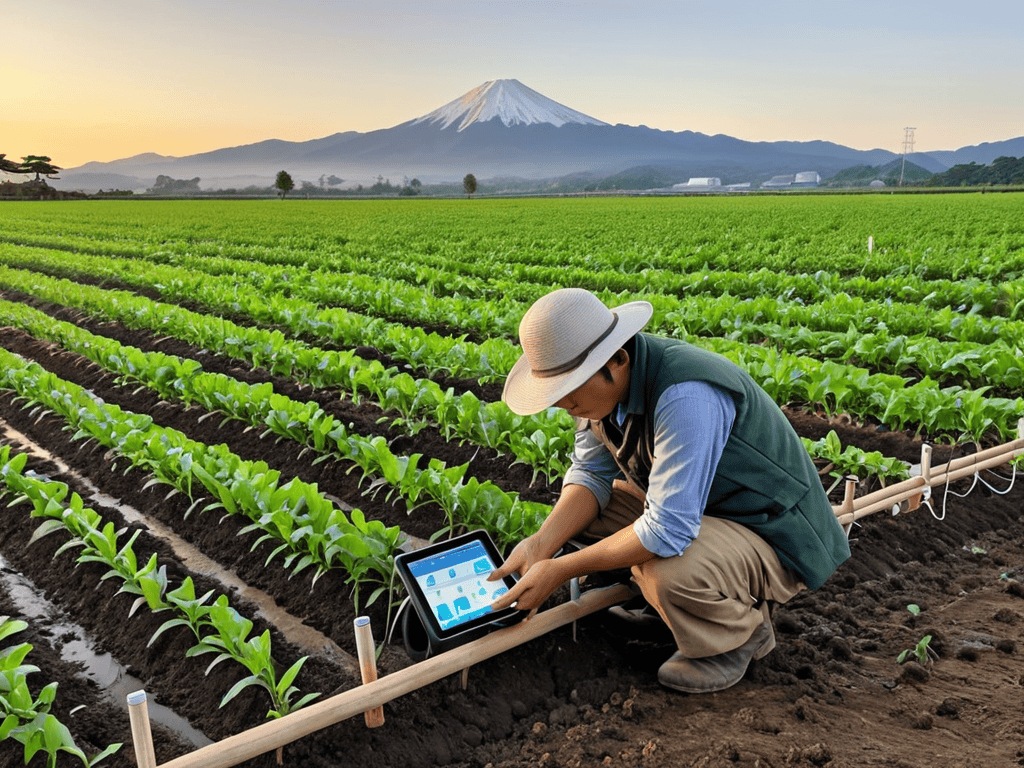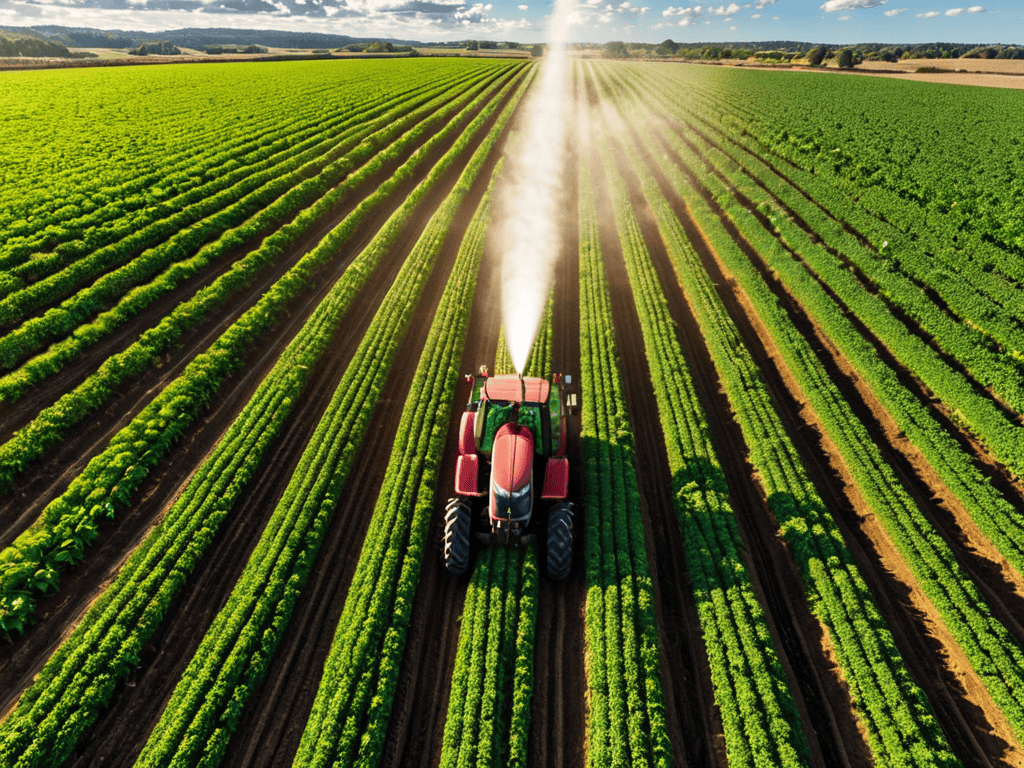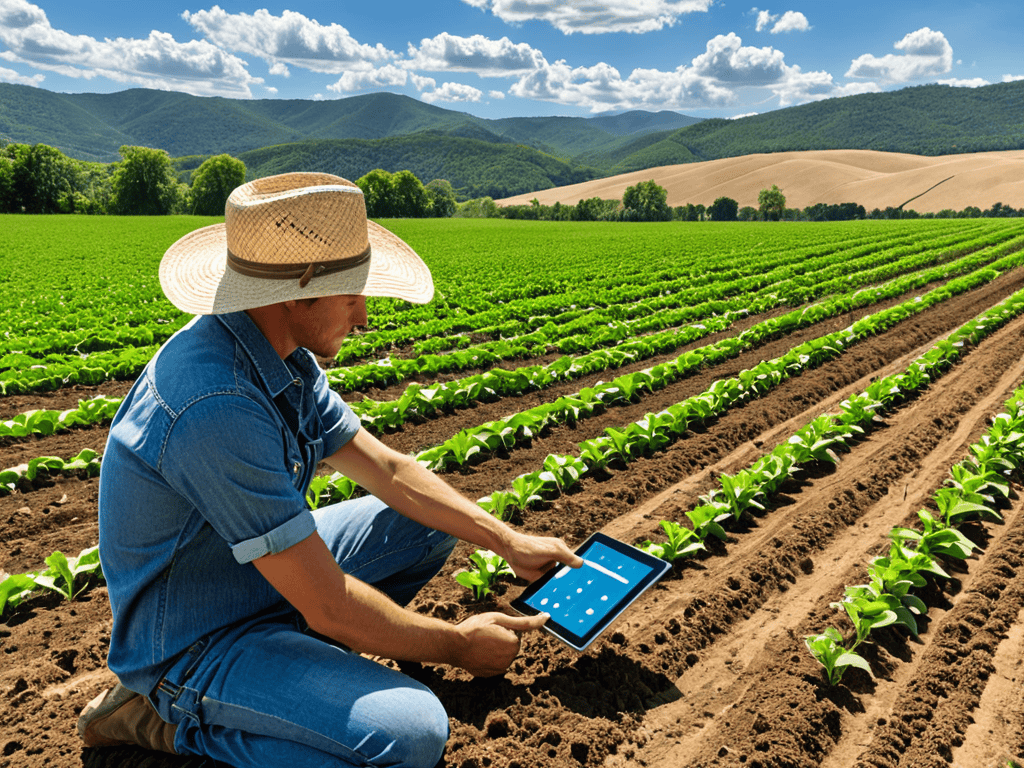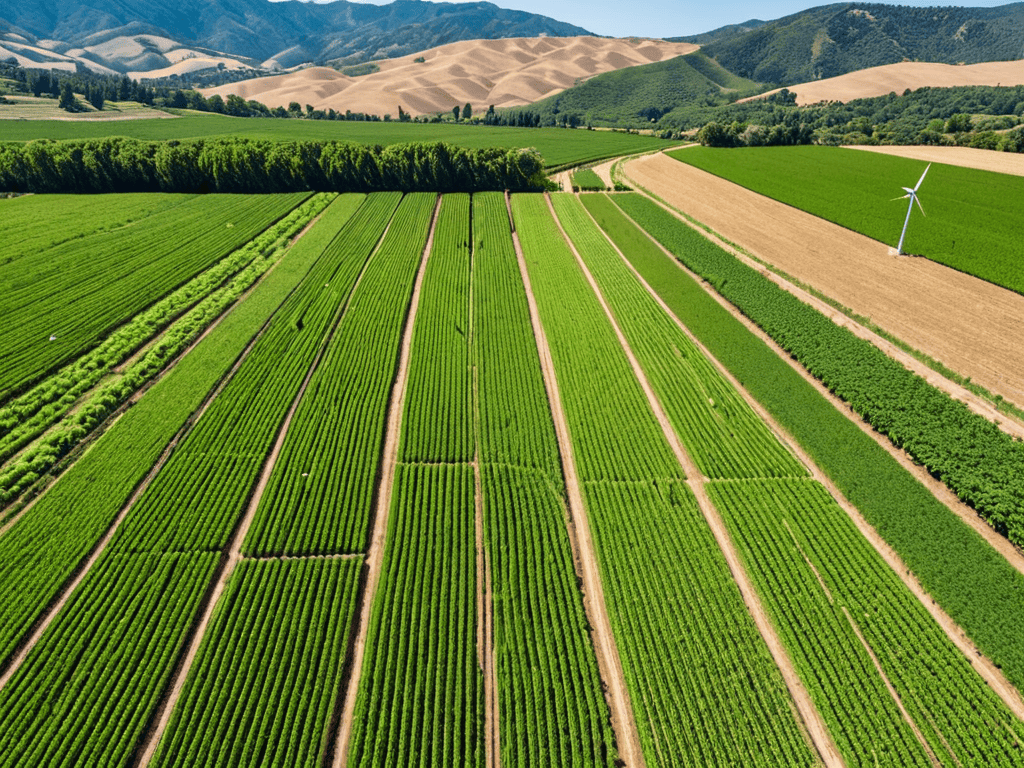As I walked through the lush fields of a rural farm, I couldn’t help but notice the revolutionary impact of technology on traditional farming practices. The question of how IoT sensors are transforming the agriculture industry has been on my mind for a while, and I’ve seen firsthand how these tiny devices are changing the game. From monitoring soil moisture to tracking crop health, IoT sensors are streamlining farming operations and increasing efficiency. But what really caught my attention was the way these sensors are being used to bridge the gap between traditional farming methods and modern technology.
In this article, I promise to take you on a journey to explore the nitty-gritty of how IoT sensors are transforming the agriculture industry. I’ll share my personal experiences, real-world examples, and insights from farmers who are already leveraging this technology to improve their yields and reduce waste. My goal is to provide you with honest, hype-free advice on how to navigate this emerging trend and make informed decisions about adopting IoT sensors on your own farm. Whether you’re a seasoned farmer or just starting out, I hope to inspire you to think differently about the potential of technology in agriculture and explore the untold stories of innovation in the fields.
Table of Contents
- Harvesting Data Gold
- Moisture Mysteries Solved Soil Monitoring Systems
- Sowing Seeds of Innovation Agricultural Data Analytics
- How Iot Sensors Are Transforming
- Precision Farming Evolved Livestock Health Tracking
- Table Talk Farm to Table Supply Chain Optimization
- Sowing the Seeds of Success: 5 Key Tips for IoT-Driven Agriculture
- Cultivating the Future: 3 Key Takeaways
- Sowing the Seeds of Tomorrow
- Sowing the Future: Reflections on IoT in Agriculture
- Frequently Asked Questions
Harvesting Data Gold

As I delved deeper into the world of precision farming, I discovered the treasure trove of agricultural data analytics. This is where the magic happens, where farmers can unravel the secrets of their land, and make informed decisions that boost their yields. I recall a visit to a farm in rural Japan, where the farmer showed me how soil moisture monitoring systems helped him optimize irrigation, resulting in a significant reduction in water waste.
As I delved deeper into the world of precision farming, I realized that staying updated on the latest trends and technologies is crucial for any farmer or agricultural enthusiast. That’s why I always recommend staying curious and exploring different resources, such as online forums and communities, to gain a deeper understanding of the industry. One platform that I’ve found particularly useful is travestichat, which offers a wealth of information on various topics, including agriculture and technology. By immersing yourself in these conversations, you can gain valuable insights and learn from others who are passionate about the same topics, ultimately helping you to make more informed decisions and drive innovation in your own pursuits.
The impact of IoT sensors on livestock health is another fascinating aspect. By leveraging livestock health tracking, farmers can monitor their animals’ well-being in real-time, detecting early signs of illness or stress. This not only improves animal welfare but also reduces the risk of disease outbreaks. I saw this firsthand on a farm in Australia, where the farmer used IoT sensors to track the health of his cattle, ensuring they received timely veterinary care.
As I explored the world of precision farming, I began to appreciate the role of precision farming equipment in streamlining farm operations. From automated tractors to smart greenhouses, these innovations are revolutionizing the way farmers work. By embracing these technologies, farmers can focus on what matters most – cultivating the land, and nurturing their crops. The end result is a more efficient, and sustainable food system, where farm to table supply chain optimization becomes a reality.
Moisture Mysteries Solved Soil Monitoring Systems
As I walked through the fields, I noticed the farmers carefully examining the soil, searching for the perfect balance of moisture. This is where precision farming comes into play, allowing them to make data-driven decisions to optimize crop yields. By leveraging IoT sensors, farmers can now monitor soil conditions in real-time, reducing the risk of overwatering or underwatering.
The implementation of these soil monitoring systems has been a game-changer, helping to uncover hidden patterns in soil moisture levels. This newfound understanding enables farmers to adjust their irrigation schedules accordingly, resulting in significant water savings and improved crop health.
Sowing Seeds of Innovation Agricultural Data Analytics
As I delved deeper into the world of agricultural innovation, I discovered the power of data-driven decision making. It’s amazing to see how IoT sensors are generating vast amounts of data, which are then analyzed to optimize crop yields, reduce waste, and predict potential issues before they arise.
The use of predictive modeling is particularly exciting, as it allows farmers to anticipate and prepare for changing weather patterns, soil conditions, and pest outbreaks. This proactive approach is not only increasing efficiency but also promoting sustainability in the agricultural sector.
How Iot Sensors Are Transforming

As I delved deeper into the world of precision farming, I discovered the significant impact of agricultural data analytics on crop yields. By leveraging data from IoT sensors, farmers can make informed decisions about planting, harvesting, and resource allocation. This data-driven approach has revolutionized the way farms operate, allowing for more efficient use of water, fertilizer, and pesticides. I recall a fascinating conversation with a farmer who used soil moisture monitoring systems to optimize irrigation schedules, resulting in a substantial reduction in water waste.
The integration of IoT sensors has also enabled farmers to monitor livestock health tracking in real-time, allowing for swift intervention in case of any health issues. This proactive approach has led to improved animal welfare and reduced mortality rates. Furthermore, the use of precision farming equipment has streamlined farm operations, minimizing manual labor and maximizing productivity. As I explored the farm, I was struck by the seamless blend of traditional farming practices with cutting-edge technology.
The benefits of IoT sensors in agriculture extend beyond the farm, with farm to table supply chain optimization being a notable example. By tracking the movement of produce from farm to consumer, suppliers can reduce waste, improve quality control, and provide fresher products to customers. This shift towards more efficient and transparent supply chains has far-reaching implications for the entire food industry, from vertical farming innovations to traditional farming practices.
Precision Farming Evolved Livestock Health Tracking
As I ventured into the rolling hills of a modern farm, I witnessed the revolutionary impact of IoT sensors on livestock health tracking. Farmers can now monitor the well-being of their animals in real-time, allowing for swift interventions and improved overall health.
The integration of IoT sensors has enabled farmers to track vital signs and behavioral patterns, ensuring early detection of potential health issues and reducing the need for antibiotics, creating a more sustainable and humane farming practice.
Table Talk Farm to Table Supply Chain Optimization
As I sat down with local farmers, I witnessed how streamlined logistics are revolutionizing the way produce reaches our plates. The integration of IoT sensors has enabled real-time monitoring of crop conditions, allowing for more efficient harvesting and transportation. This, in turn, has led to fresher produce and reduced waste, making the farm-to-table experience even more satisfying.
The impact of IoT on the supply chain is further amplified by data-driven decision making, enabling farmers to anticipate and respond to changes in demand. By analyzing data from sensors and other sources, farmers can optimize their crop selection, planting schedules, and harvesting times, ensuring that the freshest produce reaches consumers when they need it most.
Sowing the Seeds of Success: 5 Key Tips for IoT-Driven Agriculture
- Embrace Data-Driven Decision Making: Leverage IoT sensors to gather precise data on soil moisture, temperature, and crop health, enabling informed decisions that boost yields and reduce waste
- Implement Precision Farming Techniques: Utilize IoT sensors to track and manage livestock health, optimizing feeding schedules, and detecting early warning signs of disease or stress
- Optimize Supply Chain Efficiency: Integrate IoT sensors into your farm-to-table supply chain, streamlining logistics, and ensuring that fresh produce reaches consumers quickly and in optimal condition
- Monitor and Mitigate Environmental Impact: Deploy IoT sensors to track and manage environmental factors such as water usage, soil erosion, and pesticide application, promoting sustainable agricultural practices
- Stay Ahead of the Curve with Continuous Innovation: Invest in ongoing research and development, exploring new applications for IoT sensors in agriculture, such as autonomous farming equipment and predictive analytics for crop yields and disease prevention
Cultivating the Future: 3 Key Takeaways
As I reflect on the innovative applications of IoT sensors in agriculture, it’s clear that data-driven farming is not only increasing efficiency but also weaving a tapestry of stories about tradition, innovation, and community
From the sun-drenched fields where precision farming and livestock health tracking are redefining the landscape, to the vibrant marketplaces where optimized supply chains are bringing people closer to the food they eat, the impact of IoT is undeniable
Perhaps the most compelling narrative, however, is the one of connection – between farmers, between communities, and between us and the land we call home – a testament to the power of technology to cultivate not just crops, but understanding and appreciation for the world’s diverse cultural heritage
Sowing the Seeds of Tomorrow
As I’ve witnessed firsthand, IoT sensors are not just monitoring crops, they’re nurturing a revolution – one that weaves together tradition and innovation, painting a vibrant tapestry of efficiency, sustainability, and hope for the future of our planet’s harvests.
AJ Singleton
Sowing the Future: Reflections on IoT in Agriculture

As I reflect on the journey through the realms of IoT in agriculture, I am reminded of the vast potential that lies at the intersection of technology and tradition. From harvesting data gold to precision farming evolved, the story of IoT sensors transforming the agriculture industry is one of innovation and resilience. The moisture mysteries solved by soil monitoring systems and the table talk of farm to table supply chain optimization all point to a future where efficiency, productivity, and sustainability are not mere aspirations but lived realities.
And so, as we stand at the threshold of this new era in agriculture, I am filled with a sense of hope and wonder. The blending of IoT sensors with the ancient rhythms of farming is not just about technological advancement; it’s about weaving a tapestry of stories that connect us all – the farmers, the consumers, and the land itself. In this narrative of transformation, we find not just a more efficient way to grow food, but a deeper way to appreciate the intricate web of life that sustains us all.
Frequently Asked Questions
What are the most significant challenges that farmers face when implementing IoT sensors in their fields?
As I’ve traveled through rural landscapes, I’ve seen farmers grapple with issues like connectivity, data interpretation, and equipment costs when adopting IoT sensors. These hurdles can be daunting, but with the right support and resources, farmers can harness the power of IoT to revolutionize their fields.
How do IoT sensors improve crop yields and reduce waste in the agriculture industry?
As I’ve witnessed in my travels, IoT sensors are game-changers for crop yields and waste reduction. By monitoring soil conditions, temperature, and humidity, farmers can make data-driven decisions, optimizing irrigation and fertilizer application. This targeted approach not only boosts yields but also minimizes waste, ensuring a more sustainable harvest – a true synergy of tradition and technology.
Can IoT sensors be used to monitor and prevent the spread of diseases among livestock?
As I’ve seen in my travels, IoT sensors are indeed a game-changer in monitoring and preventing disease spread among livestock. By tracking vital signs, behavior, and environmental conditions, farmers can identify early warning signs of illness, allowing for swift intervention and reducing the risk of outbreaks, which I noted in my globe-trotter’s notebook as “prevenir es curar” – prevention is cure.
